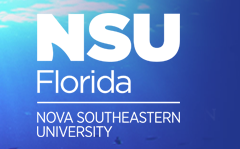-

Now, Are We Here?
Brendan Eldom
How many of us actually tune in to our internal and external environments? And how many of us are moving through each day, but not really present in our own experiences? “The now” is a mysterious, complex piece of time we all struggle with. And yet, we are all connected to one another in this very moment. Is “the now” life? And if it is, and we are not fully present, are we truly living?
-

Time, Trauma, and Transformation
Steven Gold
A powerful example of the disparity between regimented clock-time and experiential lived-time is the odyssey into, through, and out of the nightmare of traumatization. For many trauma survivors, recovery brings on an entirely new sense of time. Time is now a gift to be unhurriedly and luxuriantly savored as a quality of life that was previously unimaginable reveals itself—one imbued with rich awareness of the present and hopeful anticipation of the future.
-

Time: A Combat Leader’s Perspective
Robert R. Hayward II
Throughout history, leaders have brought together members of diverse cultural and ethnic backgrounds to accomplish shared goals. In these situations, time is the most precious resource because leaders must prioritize actions within finite time constraints. Synchronizing time-to-quality organizational development can be accomplished with the practice of tenants developed by Hayward during his combat tours in Afghanistan and Iraq.
-

Assessment of Metal Contamination in Seabirds of South Florida
Caitlyn A. Nay, James Gelsleichter, Amy Hirons, Dimitri Giarikos, and David Kerstetter
Metal concentrations will be determined in the kidney, liver, breast muscle, and feathers of brown pelicans (Pelecanus occidentalis), royal terns (Thalasseus maximus), laughing gulls (Leucophaeus atricilla), herring gulls (Larus argentatus), northern gannets (Morus bassanus), and double-crested cormorants (Phalacrocorax auritus) collected from four wildlife rehabilitation centers in South Florida. Currently, results for total mercury concentrations in all tissue samples with the exception of feathers have been determined for 44 birds. The mean total mercury concentrations in muscle, kidney and liver ranged from 0.559 to 9.57 μg/g (dry wt.), 2.06 μg/g to 12.16 μg/g (dry wt.), and 2.18 to 42.67 μg/g (dry wt.), respectively. Ongoing research will provide metal concentrations by March 2016 for nickel, copper, lead, zinc, cadmium, vanadium and manganese. In the liver and kidney, values of methylmercury between 20 and 30 μg/g (dry wt.) are reported to cause morbidity and mortality effects in birds. According to the values so far, royal terns and cormorants on average have values of total mercury exceeding or within the reported range. Further assessment will help to confirm whether the seabirds of South Florida face a significant threat from metal pollution.
-

The State of Time—A Spoken Word
Stephen Rafferty
At 15, Rafferty started scouting local open mic establishments, trying to get as much comedic exposure as possible. Within five years, he became an entrepreneur of sorts by creating a best-selling book, a YouTube interview miniseries, and two podcast series. His works have collectively garnered over 40,000 views. Rafferty will be unveiling a new spoken word performance at TEDxNSU.
-

What Do You Do With Your Time?
Isabel Rimanoczy, Ed.D.
What if we were tasked with making a difference, so that our time on this planet leaves it better than we found it? Rimanoczy has researched leaders who champion initiatives that have made a positive impact on the world, hoping to find ways to actively develop a new generation of responsible, purposeful leaders. The surprise: the solution is about the knowing, the being, and the doing. It is about connecting head with heart and hands, and connecting spiritual and emotional intelligence with action.
-

Do You Really Qualify for Divorce?
Michelle Rozen, Ph.D.
Divorce is an epidemic with 45–50% of first marriages and 60–67% of second marriages ending in divorce. Too often, couples don’t take the time necessary to determine if divorce was right for them. But there is a research-based approach that offers couples the time, insight, and tools to empower them to better assess their unique situations based on a series of applicable questions.
-

Little Steps and Giant Leaps: Time Is Limited, Possibility Is Not
Rheanna Rutledge, Ph.D.
During a yearlong tour in Afghanistan as a Lead Social Scientist with the U.S. Special Forces, Rutledge was reminded that time is no guarantee. By the end of her tour, lives were changed and many were saved, while her own life gained new perspective. In her talk, she explores the psychological connections between attitude and behavior that can take us from little steps to giant leaps.
-

Now or Never
Qaas Shoukat
In the fast-paced, technology-saturated world we live in today, many resources and services are readily available through the internet. What may have taken a long time in the past is now achieved in mere moments. Yet, technology has not been able to speed up everything. It is within this gap that we are living—in a state of increasing impatience—as we seek instant gratification in every facet of life, yet are forced to wait for those beyond our control.
-

Journey or the Milestones: Epigenetic Changes as Timestamp Along the Way of Human Evolution
Malav Trivedi, Ph.D.
Epigenetic changes are an epi-phenomenon that happens on—not in—the genetic code of an individual. These marks regulate cellular and physiological phenotypic trait variations caused by external or environmental factors, which switches genes on and off without changes in the DNA sequence throughout evolution. Epigenetic changes may not only serve as a memory timestamp for the day-to-day lifestyle of an individual, but are also an evolutionary timestamp and have contributed to who we are as a species.
TEDxNSU is an annual event, featuring engaging lectures, videos, visual art, and interactive experiences at Nova Southeastern University under the direction of associate professors Leanne Boucher and W. Matthew Collins. TEDxNSU showcases "ideas worth spreading" from members of our diverse university community.
Thought-provoking events like TEDxNSU support the college's aim to encourage intellectual exploration and the sharing of ideas amongst students, faculty and staff, and members of the local community. TEDxNSU expands this reach to a global audience with videos of the lectures available on YouTube.
Printing is not supported at the primary Gallery Thumbnail page. Please first navigate to a specific Image before printing.


